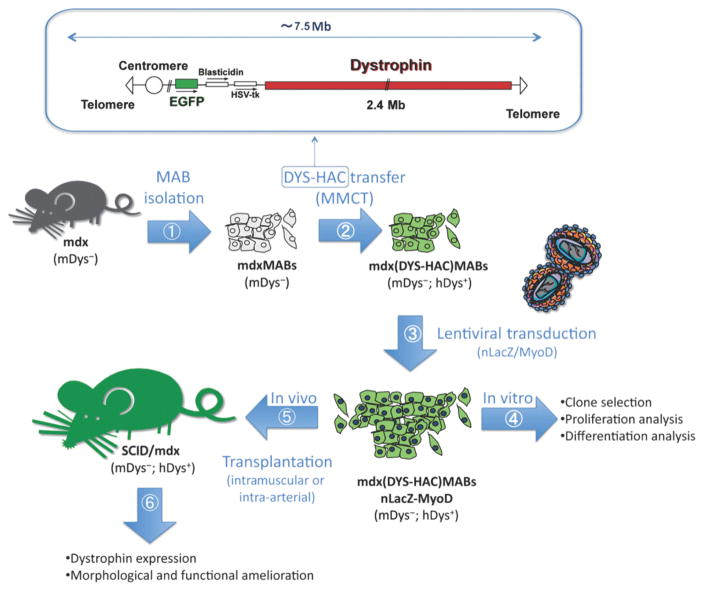Figure 17.
Engineering stem cells to deliver human artificial chromosomes for the treatment of muscular dystrophy. The scheme illustrates the various steps of the process. Mesoangioblasts were first isolated from mdx dystrophic mice (1) and transduced with the DYS-HAC vector (shown in the upper part of the panel) (2); they then underwent selection. Selected clones (EGFP-positive) were transduced with two lentiviral vectors expressing MyoD and nLacZ (3). After in vitro characterization (4), the corrected mesoangioblasts were transplanted into dystrophic SCID/mdx mice (5). Afterwards, the mice were analyzed for dystrophin expression and morphological and functional recovery (6). MABs, mesoangioblasts; mdx (DYS-HAC) MABs, DYS-HAC–corrected mdx-derived mesoangioblasts; MMCT, microcell-mediated chromosome transfer; EGFP, enhanced green fluorescent protein; mDys, murine dystrophin; hDys, human dystrophin. Reproduced with permission.[304] Copyright 2011, Science.

